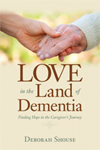Activities
Everyday Heroes and Nine Great Things We Learned This Weekend
This weekend we were lucky to be around a lot of heroes—the staff and grantees of The Brookdale Foundation Group, which supports national Relatives as Parents Programs, along with Group Respite programs. We loved the sense of commitment and community we felt at this event and we also enjoyed learning from other speakers and the attendees. Here are the nine great things we learned from this weekend’s conference.
I.
Explain
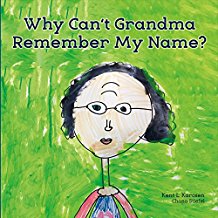 Kent Karosen, President and CEO of the Fisher Center for Alzheimer’s Research, spoke about his new children’s book, Why Can’t Grandma Remember My Name? Written about the way the brain is impacted by dementia and the affects it has on children, the book is illustrated in brilliantly colorful art, created by children, juxtaposed with art by people who are living with dementia. To learn more, www.alzinfo.org
Kent Karosen, President and CEO of the Fisher Center for Alzheimer’s Research, spoke about his new children’s book, Why Can’t Grandma Remember My Name? Written about the way the brain is impacted by dementia and the affects it has on children, the book is illustrated in brilliantly colorful art, created by children, juxtaposed with art by people who are living with dementia. To learn more, www.alzinfo.org
II.
Reframe
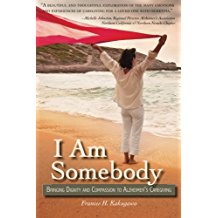 Frances Kakugawa, author of I Am Somebody, spoke of the powerful role poetry played in her caregiving role throughout her mom’s dementia journey. While scrubbing the floor after her mother’s bathroom accident, Frances thought, “There must be another poem here.” She decided to consider herself a poet-caregiver, rather than a struggling-caregiver. Reframing her image and her language helped her transform her attitude. You’ll enjoy visiting www.franceskakugawa.wordpress.com and learning more about Frances, her writing, and her many books.
Frances Kakugawa, author of I Am Somebody, spoke of the powerful role poetry played in her caregiving role throughout her mom’s dementia journey. While scrubbing the floor after her mother’s bathroom accident, Frances thought, “There must be another poem here.” She decided to consider herself a poet-caregiver, rather than a struggling-caregiver. Reframing her image and her language helped her transform her attitude. You’ll enjoy visiting www.franceskakugawa.wordpress.com and learning more about Frances, her writing, and her many books.
III.
Play
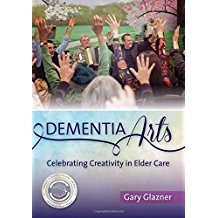 Who knew you could have so much fun with poetry! Gary Glazner, for one, founder of the Alzheimer’s Poetry Project, who lead the whole group in a rousing call and response version of several popular poems. Gary added in music, movements, and stoked up our enthusiasm and our energy. We also created a poem together. You’ll enjoy using his ideas to deepen your communications and your connections. Visit www.alzpoetry.com and treat yourself to his book, Dementia Arts: Celebrating Creativity in Elder Care.
Who knew you could have so much fun with poetry! Gary Glazner, for one, founder of the Alzheimer’s Poetry Project, who lead the whole group in a rousing call and response version of several popular poems. Gary added in music, movements, and stoked up our enthusiasm and our energy. We also created a poem together. You’ll enjoy using his ideas to deepen your communications and your connections. Visit www.alzpoetry.com and treat yourself to his book, Dementia Arts: Celebrating Creativity in Elder Care.
IV.
Support
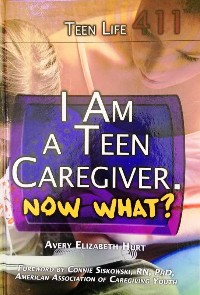 We were shocked and saddened to learn there are more than one million caregiving youth in our country, struggling to stay in school and keep afloat while taking care of ailing family members. Connie Siskowski’s organization, American Association of Caregiving Youth, provides support for these gallant middle schoolers and teens. To learn more about her program, visit www.aacy.org
We were shocked and saddened to learn there are more than one million caregiving youth in our country, struggling to stay in school and keep afloat while taking care of ailing family members. Connie Siskowski’s organization, American Association of Caregiving Youth, provides support for these gallant middle schoolers and teens. To learn more about her program, visit www.aacy.org
V.
Care
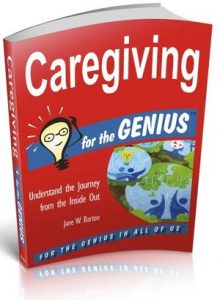 How many of us take enough time to truly care for and nurture ourselves. Jane Barton, speaker, write, and listener, spoke eloquently of compassion fatigue, born of too much caring for others and not enough focus on self. We laughed, cried, and reminded ourselves of the importance of self-care. Learn more from her at www.cardinalife.com and see her book, Caregiving for the GENIUS: Understand the Journey from the Inside Out.
How many of us take enough time to truly care for and nurture ourselves. Jane Barton, speaker, write, and listener, spoke eloquently of compassion fatigue, born of too much caring for others and not enough focus on self. We laughed, cried, and reminded ourselves of the importance of self-care. Learn more from her at www.cardinalife.com and see her book, Caregiving for the GENIUS: Understand the Journey from the Inside Out.
 There were more amazing speakers, but we didn’t get to hear them because we were speaking all day Saturday, sharing two information-packed sessions of Connecting in the Land of Dementia and one session of our beloved The Hero Project. But just because we were teaching doesn’t mean we weren’t learning. Here are just a few of the tips we gathered from our participants.
There were more amazing speakers, but we didn’t get to hear them because we were speaking all day Saturday, sharing two information-packed sessions of Connecting in the Land of Dementia and one session of our beloved The Hero Project. But just because we were teaching doesn’t mean we weren’t learning. Here are just a few of the tips we gathered from our participants.
VI.
Give
As a way of adding meaning and purpose to life, one memory care day group created dog biscuits to donate to their local animal shelter. They stirred up a healthy mixture of organic ingredients, used cookie cutters, and delighted a lot of lonely pooches.
VII.
Collage
Another day care center helped a non-verbal resident create her own collage. One caring person watched carefully as this elder looked through a magazine, pausing at pictures of interest. Then the caregiver tore the photos that had intrigued the woman. Together, they glued them into a collage that the woman enjoys looking at often.
VIII.
Sing
“Song titles inspire singing and conversation,” one participant told us. She shouts out familiar titles and someone in her memory care group usually sings the next couple of verses, with others joining in. This often sparks a conversation about the song.
IX.
Share
The sense of community and generosity during the weekend reminded us again of why we love doing this work and of the importance of sharing things that work, things that don’t, and asking about things we wish we knew. Often, someone else has an answer for us, usually one of those quiet, but powerful, everyday heroes.

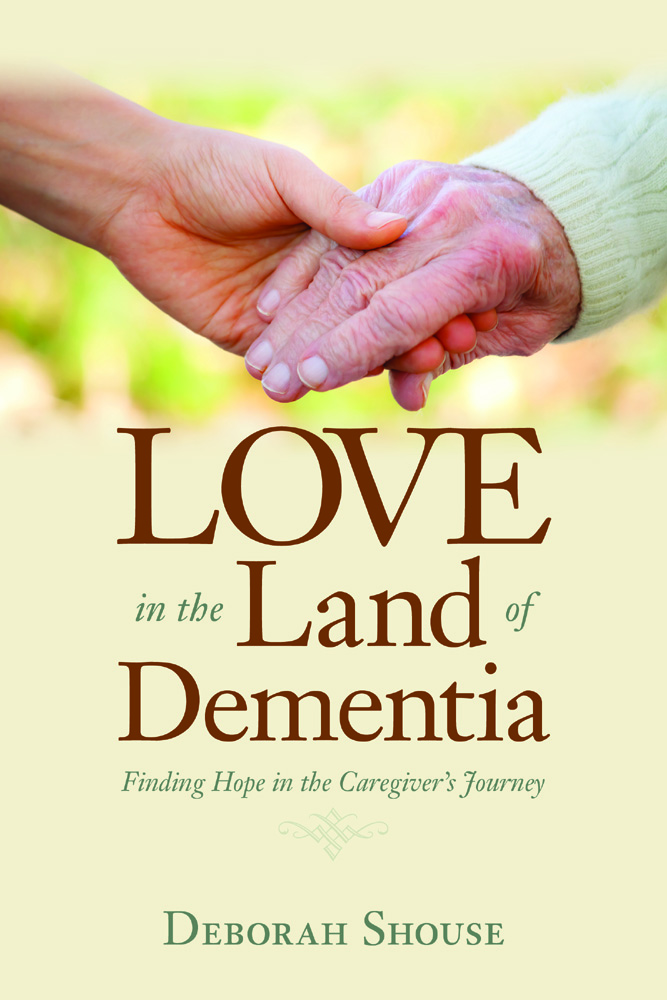
Widening the World Through Travel
As the waiter served dessert, Lori La Bey looked around the table at her family and smiled. She couldn’t believe she had pulled this off — her children, her siblings and their children, and her parents all enjoying a Caribbean cruise together. Her mother was living with Alzheimer’s and her father had brain cancer: they had assumed they wouldn’t get to travel again. They were beaming and Lori knew all her planning had been worth it. She was widening the world through travel.
She still treasures the family pictures from this trip. This meaningful travel experience inspired Lori, founder and host of Alzheimer’s Speaks, to orchestrate a cruise for people who are living with dementia and their families.
“Travel is a normal part of life,” Lori says. “When you stop traveling, your world becomes smaller.”
From her years caring for her mom, Lori understands how easy it is to feel isolated and stuck. She also understands the joy of engaging in the world, trying new things, and meeting new people. Her trip enriched her family and she wants to offer others that gift of connection and adventure.
Lori also learned some tips from traveling with her parents. Here are a few ideas for creating a smooth traveling experience for yourself and for someone who is living with dementia:
Create a flexible travel experience. Lori chose cruising because it can be reasonably priced, you can unpack once and stay in the same room the entire trip, and there’s lots of flexibility with eating (including free room service), activities, and touring. Cruising is also ideal for the intergenerational experience, offering activities for all ages.
Make the person living with dementia part of planning the trip. Discuss the trip with all involved, asking for feedback and talking about what each person really wants to do. Incorporate those dreams into the trip.
Empower your travelers. Lori packed all her parents things into one giant suitcase. Her father had always been the one managing the luggage and he really wanted something to carry. “I hadn’t thought to pack a couple of small bags so he and my mom could feel like regular travelers,” Lori says. “People want something to be in charge of so they don’t feel left out.”
Work with a travel agent and make your life easier. Plan in advance for noise, long transfers, layovers, long car rides, and other chaos. If flying, call the airport if you need to arrange for wheelchairs or other inner airport transportation. To mute noises, bring earplugs. Carry along items that soothe and comfort each of us, including favorite music and head phones. If you’re cruising, talk to the cruise lines in advance, discussing special needs, including dietary, medical, and any mobility issues.
Take pictures and videos and document these precious moments. You’ll enjoy looking through these memories again and again together.
“Travel is about being together and widening your world,” Lori says. “It’s a wonderful way to build those moments of magical and meaningful connection.”
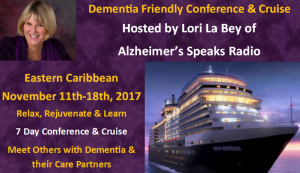
For an amazing way to widen your world, consider Lori’s upcoming November Dementia Friendly Conference and Cruise. Lori and a team of educators, including a panel of inspiring people who are living with dementia, have planned a nurturing, connecting, educational, and inspiring Caribbean trip. For more information, visit, https://alzheimersspeaks.com/cruise-with-us
Finding Meaningful Memory Care
“I feel like I’ve been on extended vacation,” Ron’s father Frank said, after his first day in a memory care facility. “Today was really enjoyable.” Ron and I just melted with happiness. We had visited many facilities, with the hope of finding meaningful memory care with great activities. Frank couldn’t have said anything nicer.
It’s quite an emotional journey, finding meaningful memory care. So many of you have asked me for tips. I am re-posting the great ideas from my friend, Dr. El, Dr. Eleanor Feldman Barbera, PhD, author of The Savvy Resident’s Guide and a columnist for McKnight’s Long Term Care News.
Finding Meaningful Memory Care With Engaging Activities
“Remember, everything is an activity,” says Dr. El. She encourages care partners to seek a community with a dedicated memory care program, so people with cognitive impairments can benefit from all the offered activities.
“In a specialized unit, staff are trained to work with people who are living with dementia,” Dr. El says. “This training can help people enjoy greater independence.”
In one facility, a lady liked to wander into people’s rooms and take their jewelry. Rather than getting upset, the staff understood, framed this as “shopping,” and simply returned the jewelry.
“These kinds of insights create a calmer, slower-paced environment that reduces agitation,” says Dr. El.
Seek Structure, Soothing and Variety
Here are some things to look for, as you visit facilities:
Is there a home-like atmosphere?
Is there a structure to the day?
Are there calming activities scheduled for change of shift? Changing shift is disruptive, so some communities orchestrate a teatime with music or other soothing activities.
You’re also making sure there are a variety of activities throughout the day. These should include:
Outdoor Time: Taking people outside makes a big difference in mood, appetite, and the sense of connection to the world.
Movement: Exercise is an important component to health.
Nurturing: Look for activities that make people feel confident and good about themselves, such as spa days or activities that incorporate skills such as cooking, art, or gardening, modified to provide a “success” experience.
Engagement: Being engaged, rather than just entertained, inspires a sense of purpose, creativity, and social connection.
Kindness is Everything
“Meet with the recreational therapist,” Dr. El suggests. “Is she compassionate and caring? Are the staff members kind? You can have all the activities in the world but if they’re not done with gentleness and humanity, they won’t work.”
Let the recreation director know what your loved one likes to do and see if she can adapt the activity.
Stay Involved
Visit as often as you can and attend activities together. Encourage friends and relatives to join you. Meet other residents and get to know the families and staff.
“You can act as a connector to create friendships, so residents engage in their own interaction, even when you aren’t there,” Dr. El says.
For more information, visit Dr. Eleanor Feldman Barbera, PhD, http://www.eldercarewithdrel.com,

Treat yourself to Dr. El’s book, The Savvy Resident’s Guide
How to Create Better Connections in the Land of Dementia
Ron and I both love helping people create better connections in the land of dementia. We are enjoying the second year of our meaningful Movies and Memories film series. Our next free movie events (and I say “events’ because there is so much more than just sitting and watching a film) are September 10 and November 5. Please tune into Kansas City Live on KSHB-TV on Thursday, September 7 during the 10:00 hour, for additional details.
I was delighted to be featured on Mike Good’s Together in This recent podcast. Mike is a gifted interviewer, with an authentic voice and a true commitment to help people stay better connected. I so enjoyed our time together and wanted to share the interview with you.
Recently, we have been connecting through creating laughing classes for caregivers, elders, people who are living with dementia, and others. We love going around to care communities and laughing with community members, family, and staff. Our next public laughter presentation is at the Landon Center, on October 18 at noon. It’s free and open to the public. If you’re in the Kansas City area, please come laugh with us. It’s great fun!
I was honored to have a book excerpt featured on Maria Shriver’s website. Maria does amazing work and her new book, Color Your Mind, is a visual and information treat, full of inspiring ideas.
I was thrilled when a story of mine was accepted by Chicken Soup’s The Dog Really Did That? The story honors Ron’s mom, Mollie, and her love for a dog named Biscuit. If you have a chance, read my story and so many other great essays in this inspiring book.
Finally, thanks to Mary Anne Clagett of Creative Forecasting, a publication for Activities Professionals. She is featuring a review of Connecting in the Land in their November issue. The publication brims with interesting ideas for creative and meaningful activities.
There are so many ways to Create Better Connections in the Land of Dementia, and as you can see, there is power in sharing stories, laughter, and the arts.
Enrich Life by Adapting Hobbies
We all want to be engaged in purposeful and fun activities. When we enrich life by adapting hobbies, we help people living with dementia stay engaged in activities that are meaningful and interesting to them.
Discover What’s Most Important
To adapt hobbies, ask yourself: What is most important about the activity?
For example, for gardeners, is it the feel of their hands in the soil? Is it producing flowers or harvesting vegetables? Is it having something to take care of?
For those who like quilting, is it the finished product or making the squares? Is it the companionship with other quilters? Or the texture and colors of the fabric?
For those who like cooking, is it the measuring and stirring? Do they enjoy the aromas and textures of the ingredients? Is it the joy of preparing something that thrills others? Or is it the simple pleasure of tasting delicious foods?
With those answers, you can support the aspects of the activity that really resonate. You can enrich life by adapting hobbies.
Here is a story about adapting your attitude.
Embrace the New News
That Tuesday morning, she walked into the kitchen and saw her husband, relaxed in his chair, drinking his morning coffee, and reading the newspaper. He loved his morning ritual and everything was as it always had been. Except now he was holding the newspaper upside down. At first, she was upset, angry that dementia had robbed him of reading. As she battled with her feelings, he hummed, a sign he was happy and content. She took a breath and realized, she too should be happy and content.
Go for the Greens
I love this story from Mara Botoni, author of When Caring Takes Courage. Here’s how she kept her grandfather, who was living with dementia, involved in his golf game. For a time, he walked the golf course and played with empathetic friends. When he could no longer play, he liked being driven around the course, enjoying the scent of freshly mown grass, the vistas of rolling green lawns, and the thwack of a well-hit ball. Later, at home, the family set up an indoor putting green and watched golf tournaments on television with him.
Deborah Shouse is the author of Connecting in the Land of Dementia: Creative Activities to Explore Together and Love in the Land of Dementia: Finding Hope in the Caregiver’s Journey.
Connecting Through Reading Together: Wisdom from Anne Vize
Connecting through reading together has always been part of my life, starting with my mother reading me Mother Goose and Grimm’s Fairy Tales. Even when Mom was living with dementia and could no longer track a Shakespearian play or a complicated novel, she loved holding books and she enjoyed hearing lyrical poetry. I was excited when I discovered the work of Anne Vize, Curriculum and education writer, instructional designer, and author of ‘Reading in the moment – activities and stories to share with adults with dementia’ published by Speechmark.
Anne graciously shared her insights for this blog.
Connecting Through Reading Together: Wisdom from Anne Vize
Why is reading together so important?
Reading is a powerful but sadly often forgotten tool for supporting people who have dementia. Sometimes people worry that they might not read fluently enough, or they might make mistakes when they read, and so avoid doing it all together. But people have been reading together throughout time, and the idea of sharing pose, poetry and stories is an integral part of who we are as people. Just because someone has dementia does not mean they are unable to benefit from the joy of sharing a moment in time, with a great book or piece of text.
How do you get started?
Start small and keep the reading sessions to around 10-15 minutes to begin with. Plan ahead so you know what you are going to read and the sort of ‘voice’ you will use to read it. Some texts are more suited to a bouncy, entertaining voice while others are better suited to a slow, lyrical, smooth reading style. Pick the one that suits the piece you are reading, as well as the one that suits who you are as a reader.
How do you set the scene?
Sometimes a sensory experience to begin with can be useful, or a brief discussion about the personal experiences of the listener that might relate to the story. You can make a link with seasonal activities such as Easter, Christmas, Passover, Independence Day or Anzac Day, but be aware that these festive or commemorative times might trigger particular memories for some people that might be unintended. Be sensitive and make sure you know a little about the piece you have chosen and the person you are reading to.
What kinds of stories/books do you suggest?
Read something you are comfortable with. Avoid texts with long, complex sentence structures or multiple characters, as these can be difficult for the person living with dementia to follow. Focus on stories you can read in a single session, with a limited number of characters, and a plot that only moves in a forwards direction (not something that jumps from one period of time to another, as sometimes happens in the short story genre).
How do you use the stories as conversation catalysts?
You can link what you read with a discussion, activity, or sensory experience, if it seems appropriate. For example, you could read the Australian bush poet Banjo Patterson and then combine this with a sensory experience looking at photos of the Australian bush, exploring plants, and leaves outdoors or listening to the sounds that horses hooves might make on the ground. If you are comfortable wearing a bush hat (called an Akubra in Australia) and a check shirt as you read some bush poetry, all the better!
How do you make the experience meaningful and fun?
Use your judgment and knowledge of the person you are reading to. Think about her needs and personal comfort and monitor how she is faring during your reading session. Think about sensory elements in the room that might interfere with your reading, such as outside noises, distractions outside the window, people moving in and out with meals or drinks, and the like. These can all take away from your reading experience.
Reading has a tendency to create a feeling of peace, calm and harmony for people and can be a trigger for more conversation and interaction. Even if the person does not recall the reading experience after you have finished, they will retain the mood and feeling that the piece has created for them and this may well last for long after the actual reading experience has ended.
To learn more about Anne, please visit, https://www.facebook.com/pg/Anne-Vize-Writing-Services-126820110730385/posts/?ref=page_internal
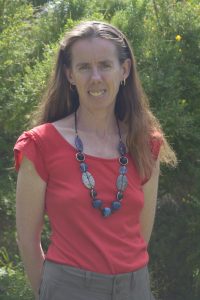
Reading in the Moment: Activities and Stories to Share with Adults with Dementia
Deborah Shouse is the author of Connecting in the Land of Dementia: Creative Activities to Explore Together and Love in the Land of Dementia: Finding Hope in the Caregiver’s Journey.
Dementia Journey: Planting Seeds and Growing Engagement
I met so many inspiring people when I was writing Connecting in the Land of Dementia. Activities director Lori Condict, from Chestnut Glen Assisted Living by Americare in St. Peters, Missouri, created an inspiring program focused on planting seeds and growing engagement. Whether you’re a family care partner or you work in a facility, you’ll learn from Lori’s project.
Planting Seeds and Growing Engagement
“Mable, I could use your assistance this morning,” Lori Condict says. “The tomatoes are ripe and I need help picking them. Are you available?”
Mable nods. Lori waits while Mable puts on her gardening hat and gloves. Then they join others from the memory care community outside in the garden.
“What are you thinking about Mable?” Lori asks, handing her a small bucket.
“My first bite of summer tomato.”
“Let’s try one of these,” Lori says. She knows that Mable and her husband used to have a vast vegetable and flower plot.
Mable plucks a cherry tomato off the vine and pops it into her mouth. Slowly, she picks another and plops it in her bucket. Others in her community are also harvesting the tomatoes.
“We’ll be sharing our vegetables with the food bank, so others less fortunate will enjoy this fresh produce, “Lori reminds her.
“That’s good,” Mable says. “Everyone needs to taste these tomatoes.”
Mable lives in the memory care unit in Chestnut Glen Assisted Living by Americare in St. Peters, Missouri. She is one of the 15 residents working on the Operation Riverfront gardening project. Lori, the activities director in the care facility, is a city girl. But she knew she’d have plenty of help from her residents. She also knew that they would thrive knowing they had a purpose and were giving back to their community.
Seeding Empowerment
Lori started simply, with a bunch of tomato, cucumber, squash, peppers, and pea seeds, pretty and colorful vegetables that would remind residents of their home gardens. Lori had tasks for all abilities: some held little containers while another filled them with dirt; some tamped in the seeds and others labeled them. Lori provided everyone with special hats and gloves.
While they worked, they reminisced, talking about favorite tomato dishes and summertime activities.
Sharing the Bounty
When it was time to share with the local food pantry, the residents did the harvesting and packing.
“We had planters, pickers, packers, counters, and a watering crew,” Lori says. “People who’d been depressed and disengaged got involved. Through working on the project, they felt alive and useful; they had a purpose.”
Want to grow plants, connections, and a sense of purpose? Here are some tips:
- Select flowers, plants, vegetables, and herbs that are pretty, colorful, easy to grow, and have some meaning to the person living with dementia.
- Create small tasks that are interesting and pleasurable.
- To increase the sense of purpose, find ways to share blooms, cuttings, vegetables, and herbs with family, friends, and community members.
- For those who can’t go outdoors, bring the plants to them in containers.
- Infuse the work with opportunities for conversation.
Deborah Shouse is the author of Connecting in the Land of Dementia: Creative Activities to Explore Together and Love in the Land of Dementia: Finding Hope in the Caregiver’s Journey.
They Yearned for Freedom
I often think of my grandparents, each of whom bravely made his and her way to America. They sought opportunity and they yearned for freedom. Freedom to be safe from persecution, freedom to practice their religion, freedom from stigma, freedom to be their own true selves. The same things we all want. Here’s to living our dreams and to helping others live their dreams.
When I was growing up, in the 1950s, the Fourth of July was a true day of freedom. We had a huge family picnic at our relative’s house. The festivities included a swimming pool and was held in a neighborhood without fences, which meant we kids could run breathlessly through the yards, chasing each other, playing tag, baseball and hide ‘n seek.
But first, we politely greeted our relatives. Then our aunt said, “How about a drink?” to my parents. And “Kids, there’s sodas in the cooler.” Dad wanted Scotch on the rocks and Mom asked for gin and vermouth. Mom joined the women who were arranging the food on long picnic tables and Dad hung out with the men, who were grilling burgers and dogs.
That’s when the freedom began. My younger brother Dan and I, normally allowed to drink only juice and milk, eagerly surveyed the array of icy sodas and we both chose Grape Nehi.
Quickly we were swept into a game of tag. Some of the kids were already wet from swimming and others still wore shorts. Underneath our clothes, Dan and I had on our bathing suits and were ready to leap into the pool and get immersed in a game of Marco Polo.
The adults were busy with drinks and conversations and no one admonished us to be quieter, slower, or more polite. We were a band of glowing energy, sweating with the joy of freedom and racing to escape being IT. We were a burst of independence, throwing off our shorts and t-shirts and cannonballing into the pool, shrieking, splashing, and laughing.
After several hours, the women beckoned us over. We dropped onto the lawn and ate ravenously off drooping white paper plates loaded with baked beans, hot dogs, corn, cole slaw, and potato chips. Then we spit watermelon seeds at each other. Finally, we sated ourselves with rich chocolate cake.
By then, the fireflies flickered and glowed. My uncle handed out sparklers without even warning us to be careful. Those dangerous sulphury sparks thrilled us. We raced about, a sparkler in each hand, writing our names on the sky, streaking across the dewy grass, leaving a trail of smoldering light behind us.
At the end of the evening, my uncle set up the fireworks. We sat on blankets, this time with our families. We were smudged, sweaty, and stained with watermelon juice and dirt. I leaned against Mom and my brother snuggled next to Dad. As the fireworks spurted up into the sky, we pressed our hands against our ears, the noise and brilliant layers of light bursting around us.
“God bless America,” my father said.
“America,” the adults echoed, their voices hushed and reverent.
Only later, when I was older, did I realize the significance of the holiday: my relatives were all first generation Americans—and on that day, among others, they were grateful their parents had escaped the tyranny and religious persecution of Poland, Russia, and Hungary and had come to this welcoming land.
But that night, I was simply worn out from my own childlike version of independence. Dan and I leaned against our parents, fighting our tiredness, and let the sounds of freedom ring us to sleep.
Deborah Shouse is the author of Connecting in the Land of Dementia: Creative Activities to Explore Together and Love in the Land of Dementia: Finding Hope in the Caregiver’s Journey.
Boost Body and Spirit with Nature: Tips for Care Partners and People Living with Dementia
“I can’t imagine a world where I couldn’t enjoy outdoor pleasures whenever I want,” said Mike Good, founder of Together in This. As I listened to Mike’s Podcast on the power of nature, I thought of my mother. Mom taught me to love birds, flowers, trees, and mountains. Even in her last days, a yellow rose could catch her attention, inspire her to reach out and touch its tender petals. This simple activity helped boost body and spirit with nature.
There’s increasing research that backs up what I observed with my mom. Strolling or wheeling around a courtyard, sitting on a bench underneath an apple tree, observing a bunny nibble clover, watching someone water a tomato plant — all these outdoor events enhance physical and mental well-being, including improving sleep cycles and reducing agitation.
Garuth Chalfont, PhD, American Society of Landscape Architects, and author of the book, Dementia Green Care, says, “Nature-oriented activities, such as growing and caring for plants, promote brain neuroplasticity and help us dream, experiment, learn and create. Research shows that nature-based activity is therapeutic and is essentially a form of treatment for dementia symptoms, helping a person remain at home longer.” Garuth is internationally known for his work in designing, building, and researching gardens that benefit people with dementia.
Mike Good says, “The feel of sunshine on my face, the smell of flowers blooming, the sounds of kids frolicking in the park — while these pleasures naturally occur for most of us, millions of people who are living with dementia find themselves unable to enjoy such routine pleasures without assistance”
Taking a loved one who is living with dementia outdoors can be stressful, but staying cooped up inside is hard on both of you. Here is a bouquet of nature’s benefits, inspiring for both people who are living with dementia and those who care for them.
Relaxing outdoor activities
Gardening activities, such as container gardening, planting seeds, watering, weeding, harvesting, sharing flowers and fruits and vegetables
Walking around the yard or strolling through the neighborhood
Discussing people and dogs walking by, asking open-ended questions, such as “Where do you think they’re going?”
Installing a small fountain and a bench, then sitting and enjoying the sound of the water
Sharing a picnic lunch
Drawing or painting outdoors
For those who enjoy projects, have tools visible and available. For a woodworker, set out wood and sandpaper. For a frail gardener, have a container of herbs. For those who like to tidy the yard, offer gardening gloves and a bucket to deposit leaves and twigs.
Bringing Nature Indoors
Garuth says, “If going outdoors is not feasible, look around your living quarters and ask, ‘Where are the best outdoor views? Where is the most sunlight?’ You may need to cut down a light-blocking bush or move a sofa, but you will discover areas where you and your partner can enjoy sitting and watching nature.”
Open the curtains and blinds to let in light.
In temperate weather, open windows and welcome fresh air and birdsong.
Green up the room with houseplants.
Bring in flowers or herbs to stimulate the senses.
Create a comfortable viewing area, with feeders, so you can enjoy watching birds and squirrels.
Gather potting soil, water, and green bean seeds. Spoon the soil into small pots or into an empty egg carton. Place one seed in each and cover with soil, then pour in a little water.
“Touching soil and planting may trigger memories and ideas from earlier years,” Garuth says.
Gathering flowers, walking a tree-lined sidewalk, plucking a cherry tomato off its vine, watering a house plant, gazing out the window at chickadees — these meaningful natural activities increase pleasure, relaxation, social interactions, and sensory stimulation.
For more information about Mike Good and his work, visit http://togetherinthis.com/ and view his nature video at https://www.youtube.com/watch?v=P7KWaSUHVQo
To learn more about Garuth’s work, visit http://www.chalfontdesign.com/ and http://www.chalfontdesign.com/lifework.html
Deborah Shouse is the author of Connecting in the Land of Dementia: Creative Activities to Explore Together and Love in the Land of Dementia: Finding Hope in the Caregiver’s Journey.
Redefining Dementia and Focusing on Wellbeing
Several months ago, I was delighted to write an article highlighting some of the American leaders in dementia care. I will be occasionally spotlighting luminaries from that article who are redefining dementia and focusing on wellbeing.
A version of this piece appeared in Signpost Journal: Journal of Dementia and Mental Health of Older People. This excellent journal from Wales, UK, offers a variety of informational and inspirational articles. I am honored to be a contributor.
Redefining Dementia and Focusing on Wellbeing
Late every afternoon, Roger paces the corridors, pausing at the locked door, fiddling with the keypad, sometimes even setting off the alarm before he resumes his pacing. Instead of labeling Roger’s behavior as “sun downing,” Allen Power, MD, teaches practitioners to ask themselves: Which vital element of health and happiness is missing from Roger’s life: identify, connectedness, security, autonomy, meaning, growth, and joy. By doing this, Dr. Power is redefining dementia and focusing on wellbeing.
Dr. Power is a geriatrician and educator on transformational models of care, with a focus on people living with changing cognitive abilities. He is also the author of two groundbreaking books, Dementia Beyond Drugs and Dementia Beyond Disease: Enhancing Well-Being.
He defines dementia as, “A shift in the way people experience the world around them.”
“I believe that most of people’s on-going distress is due to the erosion of one or more aspects of well-being, from the care environment, and/or the person’s cognitive changes. Imagine these domains of wellbeing as seven glasses being emptied. Start filling the glasses and notice the results.”
As Dr. Power trains and consults with memory care communities around the world, he sees meaningful results from this compassionate approach. Suddenly, Mary is not constantly calling out night and day. Bill is not hitting the aides when they take him to the shower. Roger is not setting off the alarm or trying to open the exit door.
“There’s no sure answer,” Dr. Power says. “You need to understand the individual and experiment until you reach the root of the problem. People may be looking for connectedness. They may feel anxious and insecure. They may be bored.”
If someone is repeatedly trying to leave the building, Dr. Power might ask: Are they feeling insecure? Are they feeling lonely and trying to reach someone they love? Are they yearning to connect with an important part of their identity, such as a beloved garden, horse, dog, or pick up truck?
Working toward an Inclusive Future
Dr. Power uses a strength-based approach to work on enhancing wellbeing. He encourages developing “brain ramps,” cognitive supports that help people move through the day in meaningful ways.
“With this positive approach, I can now look at a challenging scenario and offer insights,” Dr. Power says.
Beyond the care of the individual, Dr. Power believes in examining ingrained rituals and routines of institutionalized care, including all meals at a certain hour, with an aim of moving to a more individualized and meaningful mode of care.
“We can make mundane activities such as bathing or getting ready for bed more meaningful and relational than we normally do in long-term care,” he suggests.
“We need to support people instead of dehumanizing them,” he says. “We need to be inclusive and try harder to understand them.”
Dr. Power believes integration into society is a basic civil right.
“Imagine if people who lived with cancer, arthritis, or diabetes could only live with others who shared their medical condition. There’s a problem with seeing the disease instead of the people,” he says.
Dr. Power is contributing to a future where all communities are dementia inclusive and where dementia is just viewed as another way that people see the world.
For more about Allen Power, MD, internationally known geriatrician, educator, and author , please visit:
Website: http://www.alpower.net
Dr. Power is participating in Dementia Action Alliance’s Reimagine Life with Dementia Conference, June 25-27.
http://daanow.org/wp-content/uploads/2016/10/DAA-Conference_042817.pdf
Deborah Shouse is the author of Connecting in the Land of Dementia: Creative Activities to Explore Together and Love in the Land of Dementia: Finding Hope in the Caregiver’s Journey.


